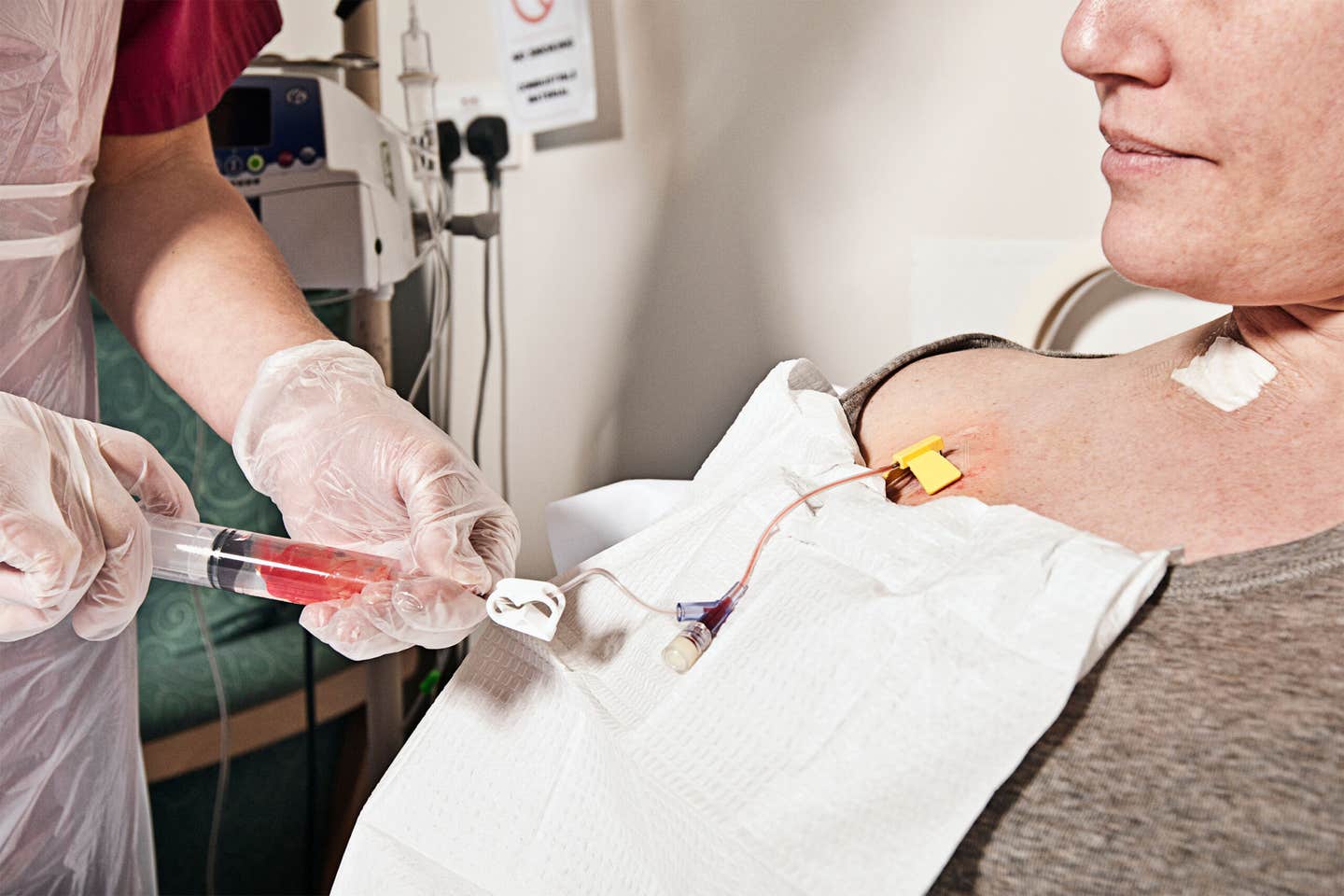Experimental cancer drug eliminates breast cancer bone metastasis
Johns Hopkins researchers find that RK-33, a drug targeting DDX3 protein, shows promise in treating breast cancer bone metastasis.

Patients with breast cancer and bone metastasis have limited treatment options and often rely on palliative care to ease difficult symptom. (CREDIT: Getty Images)
In a new study led by Johns Hopkins Medicine, the drug RK-33 has demonstrated promise in treating breast cancer that has spread to the bone (breast cancer bone metastasis). RK-33 was previously shown to help treat other types of cancer and viral illnesses.
Patients with breast cancer and bone metastasis have limited treatment options and often rely on palliative care to ease difficult symptoms, including frailty and pain. In most cases, breast cancer with bone metastasis is incurable.
Now, corresponding author Venu Raman, Ph.D., and his team say they have developed a potential novel treatment that is specific to breast cancer bone metastasis and can successfully work in the bone microenvironment, which is often resistant to therapeutics.
Their latest study, first available online in Cancer Letters, builds off Raman and colleagues’ previous work with RK-33. The drug targets and inhibits the protein DDX3, which is found to be elevated in cancer cells.
“One of our main queries was whether RK-33 could be effective for treating bone metastasis, based on previous lab findings that showed its effectiveness in suppressing breast cancer growth,” says Raman, professor of radiology and radiological science and pharmacology at the Johns Hopkins University School of Medicine.
Raman is also a member of the Johns Hopkins Kimmel Cancer Center. “We first had to determine whether DDX3 was expressed in patient samples of breast cancer bone metastasis, and we found DDX3 was expressed at high levels in these samples.”
DDX3 is an RNA helicase — a type of protein that that unwinds genetic material called RNA. This unwinding activity regulates various functions in tumor or cancer cells, including facilitating the translation of RNA’s genetic code into proteins. The DDX3 protein’s role in this process promotes growth of cancer cells, contributing to the spread of the disease.
Related Stories:
Studies conducted by Raman’s team and others indicate that RK-33, a drug developed in Raman’s lab, can prevent these functions of DDX3. As a result, it can slow down cancer progression by controlling cancer cell growth and proliferation.
After determining that breast cancer bone metastasis cells had high levels of DDX3, the research team turned to mice to test if RK-33 had any effect on the DDX3 protein and function of the cancer cells. Researchers first treated a group of mice that had breast cancer bone metastasis with RK-33.
Imaging of these mice following the treatment then confirmed that RK-33 appeared to eliminate all evidence of bone metastases, while also preventing the cancer cells in the bone from “seeding” (spreading) to other organ systems — a common occurrence in bone metastasis.
Such findings indicate that RK-33 was able to successfully target, halt the growth of and fully eliminate breast cancer bone metastasis cells by inhibiting DDX3 and successfully penetrating bone microenvironments that often block other therapies.
RK-33 also showed promise in preventing breast cancer bone metastasis from occurring in the first place. Mice with breast cancer that had not spread to bone received the drug, and researchers observed the cancer never developed into bone metastases. Researchers also did not observe any significant adverse reactions to RK-33 in their experiments.
“This is a unique research opportunity because this is not the classical investigation into tumor suppressors or oncogenes,” Raman says. “We have demonstrated DDX3’s involvement in aggressive cancers and how RK-33 represents a significant advancement in utilizing targeted therapies for cancers that currently lack specific treatments.”
Researchers say this study moves them closer to clinical trials for RK-33. They plan to continue investigating the drug’s ability to treat other conditions and DDX3’s role in several other diseases.
Additional authors who contributed to this work are Paul Winnard Jr., Farhad Vesuna, Guus Bol, Kathleen Gabrielson and Paul van Diest of the Johns Hopkins University School of Medicine, Georgia Chenevix-Trench of the Royal Brisbane Hospital and Natalie ter Hoeve of the University Medical Center Utrecht Cancer Center (Bol and van Diest are also affiliated with the Utrecht Cancer Center).
Funding for this study was supported by the Flight Attendant Medical Research Institute.
Note: Materials provided above by The Brighter Side of News. Content may be edited for style and length.
Like these kind of feel good stories? Get The Brighter Side of News' newsletter.



